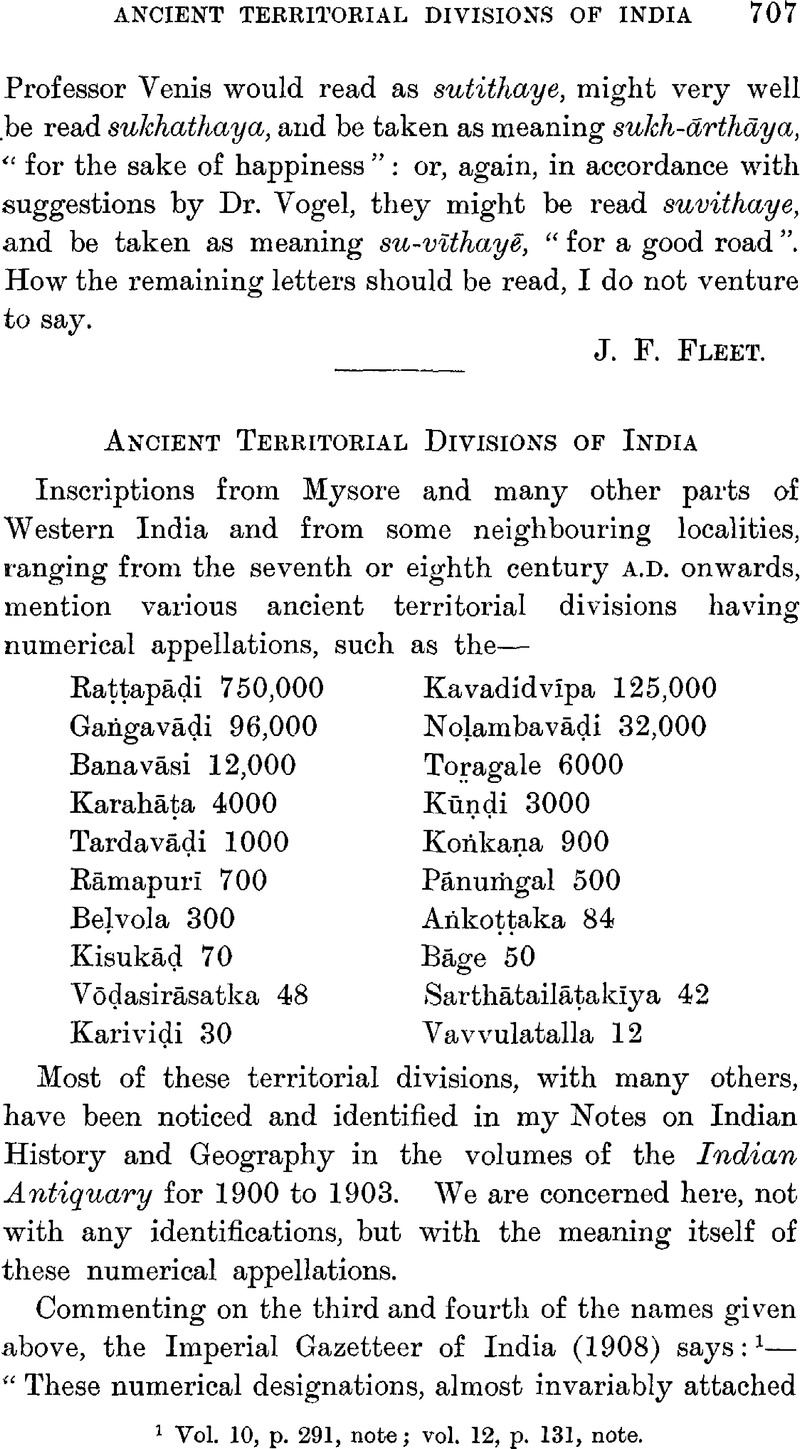No CrossRef data available.
Article contents
Ancient Territorial Divisions of India
Published online by Cambridge University Press: 15 March 2011
Abstract

- Type
- Miscellaneous Communications
- Information
- Copyright
- Copyright © The Royal Asiatic Society 1912
References
page 707 note 1 Vol. 10, p. 291, note; vol. 12, p. 131, note.
page 708 note 1 See some figures given in my Dynasties of the Kanarese Districts, Bombay Gazetteer, vol. I, part 2 (1896), p. 298Google Scholar, note 2.
page 708 note 2 I explained in 1873, in Ind. Ant., 2. 297, that the term “Belvola 300” means “the Belvola district consisting of 300 villages.” I had met in 1870 with the expression Huvvalli-dvādaśa-grāma, “the Hubḷi 12 villages” (JBBRAS, 9. 247, line 9); and that had given the clue.
page 709 note 1 Lōkaṭeyarasa, whose name is found in also the Sanskṛit form Lōkāditya, was a prince of the Mukula or Chellakētana family, regarding which see my note in Ind. Ant., 1903. 221–7. The name of the ancestor Kaḷudēvayya is a new item, now brought to notice by Mr. Narasimhachar.
page 709 note 2 These details add up to 30,102: but the record gives the total as 31,102. Either the writer made a wrong addition, or else he carelessly omitted to mention a one-thousand district; perhaps the Tardavāḍi 1000. The text, as given to me by Mr. Narasimhachar in answer to a reference on this point, runs: —
Banavāsi-pannirchchhāsiramuṁ Palasige-pannirchchhāsiramuṁ Mānya khēḍam-aṛusāsiramuṁ Koḷanu-mūvatturṁ Lōkāpurarṁ-panneraḍuṁ Toṛegarey-aṛuvāttuṁ intu mūvatt-or-chchhāsirada nūṛ = eraḍu bāḍamaṁLōkaṭeyarasar āḷe.
page 709 note 3 See Ind. Ant., vol. 29 (1900), p. 280Google Scholar, and note 38.




